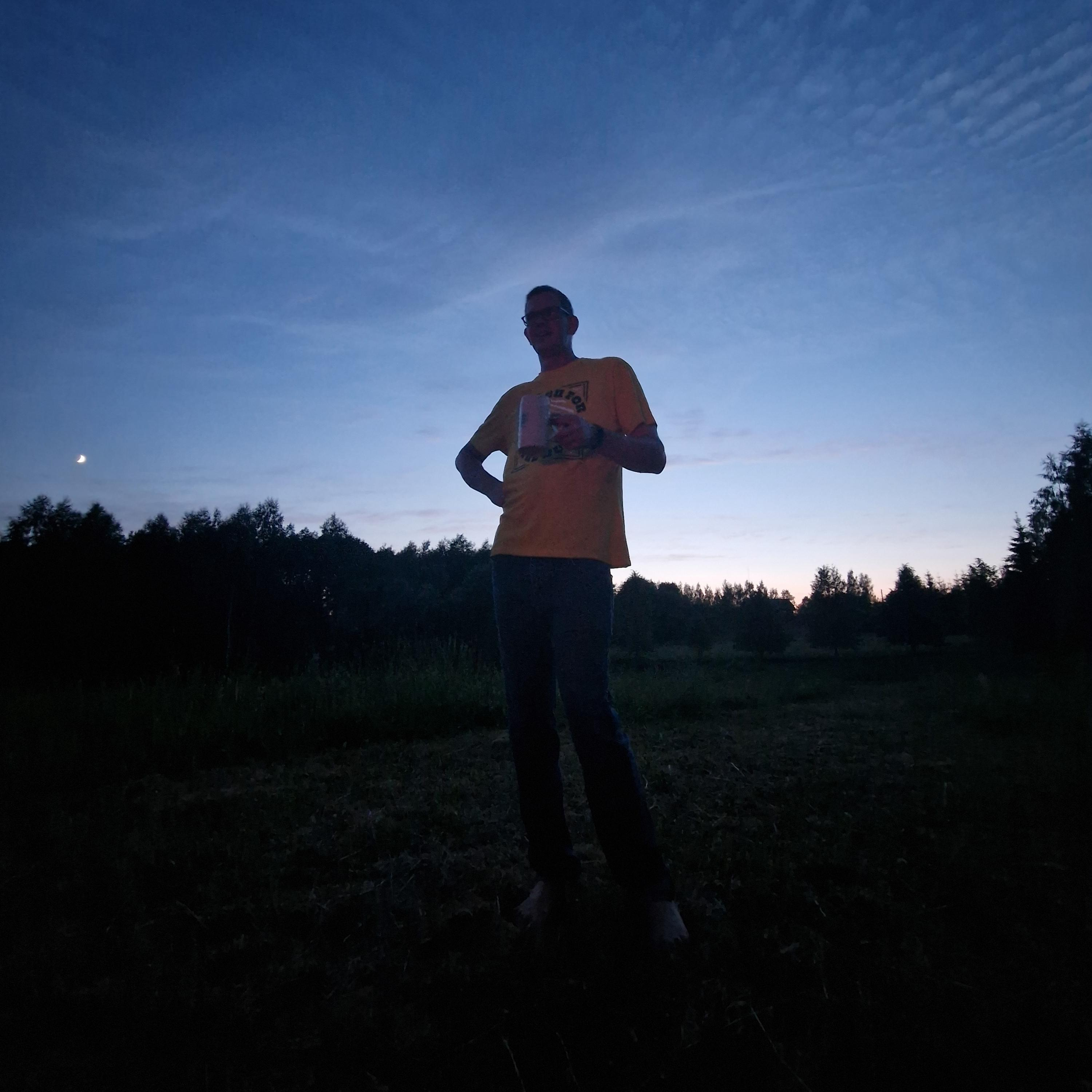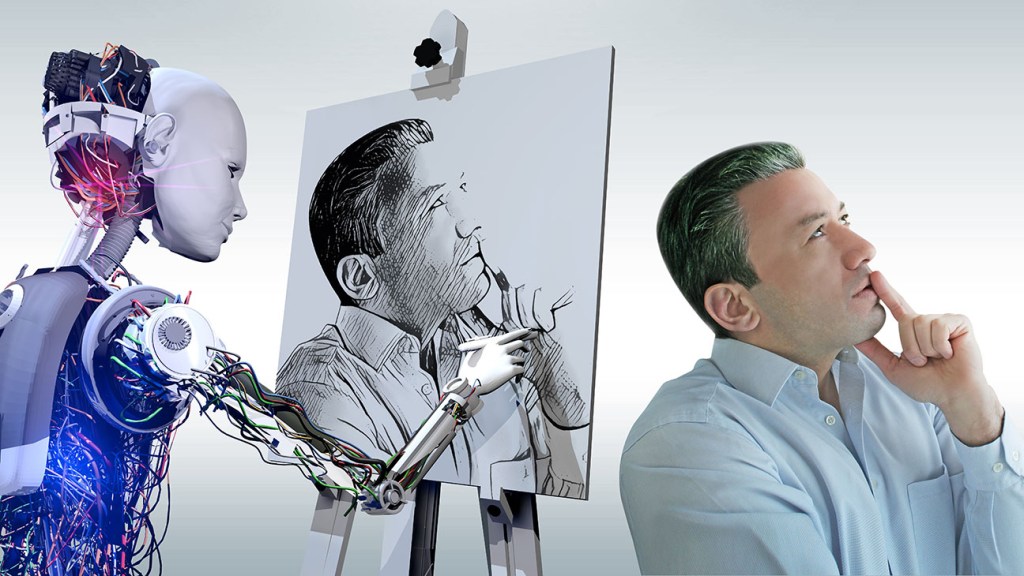More than 100 days into the writers strike, fears have kept mounting over the possibility of studios deploying generative artificial intelligence to completely pen scripts. But intellectual property law has long said that copyrights are only granted to works created by humans, and that doesn’t look like it’s changing anytime soon.
A federal judge on Friday upheld a finding from the U.S. Copyright Office that a piece of art created by AI is not open to protection. The ruling was delivered in an order turning down Stephen Thaler’s bid challenging the government’s position refusing to register works made by AI. Copyright law has “never stretched so far” to “protect works generated by new forms of technology operating absent any guiding human hand,” U.S. District Judge Beryl Howell found.
The opinion stressed, “Human authorship is a bedrock requirement.”
The push for protection of works created by AI has been spearheaded by Thaler, chief executive of neural network firm Imagination Engines. In 2018, he listed an AI system, the Creativity Machine, as the sole creator of an artwork called A Recent Entrance to Paradise, which was described as “autonomously created by a computer algorithm running on a machine.” The Copyright Office denied the application on the grounds that “the nexus between the human mind and creative expression” is a crucial element of protection.
Thaler, who listed himself as the owner of the copyright under the work-for-hire doctrine, sued in a lawsuit contesting the denial and the office’s human authorship requirement. He argued that AI should be acknowledged “as an author where it otherwise meets authorship criteria,” with any ownership vesting in the machine’s owner. His complaint argued that the office’s refusal was “arbitrary, capricious, an abuse of discretion and not in accordance with the law” in violation of the Administrative Procedure Act, which provides for judicial review of agency actions. The question presented in the suit was whether a work generated solely by a computer falls under the protection of copyright law.
“In the absence of any human involvement in the creation of the work, the clear and straightforward answer is the one given by the Register: No,” Howell wrote.
U.S. copyright law, she underscored, “protects only works of human creation” and is “designed to adapt with the times.” There’s been a consistent understanding that human creativity is “at the core of copyrightability, even as that human creativity is channeled through new tools or into new media,” the ruling stated.
While cameras generated a mechanical reproduction of a scene, she explained that it does so only after a human develops a “mental conception” of the photo, which is a product of decisions like where the subject stands, arrangements and lighting, among other choices.
“Human involvement in, and ultimate creative control over, the work at issue was key to the conclusion that the new type of work fell within the bounds of copyright,” Howell wrote.
Various courts have reached the same conclusion. In one of the leading cases on copyright authorship, Burrow-Giles Lithographic Company v. Sarony, the Supreme Court held that there was “no doubt” that protection can be extended to photographs as long as “they are representative of original intellectual conceptions of the author.” The justices exclusively referred to such authors as human, describing them as a class of “persons” and a copyright as the “right of a man to the production of his own genius or intellect.”
In another case, the a federal appeals court said that a photo captured by a monkey can’t be granted a copyright since animals don’t qualify for protection, though the suit was decided on other grounds. Howell cited the ruling in her decision. “Plaintiff can point to no case in which a court has recognized copyright in a work originating with a non-human,” the order, which granted summary judgment in favor of the copyright office, stated.
The judge also explored the purpose of copyright law, which she said is to encourage “human individuals to engage in” creation. Copyrights and patents, she said, were conceived as “forms of property that the government was established to protect, and it was understood that recognizing exclusive rights in that property would further the public good by incentivizing individuals to create and invent.” The ruling continued, “The act of human creation—and how to best encourage human individuals to engage in that creation, and thereby promote science and the useful arts—was thus central to American copyright from its very inception.” Copyright law wasn’t designed to reach non-human actors, Howell said.
The order was delivered as courts weigh the legality of AI companies training their systems on copyrighted works. The suits, filed by artists and artists in California federal court, allege copyright infringement and could result in the firms having to destroy their large language models.
In March, the copyright office affirmed that most works generated by AI aren’t copyrightable but clarified that AI-assisted materials qualify for protection in certain instances. An application for a work created with the help of AI can support a copyright claim if a human “selected or arranged” it in a “sufficiently creative way that the resulting work constitutes an original work of authorship,” it said.



This doesn’t change much because of a simple difference: This was an AI product put in wholesale.
There was no human intervention in (visually) creating this product, thus no human can claim copyright.
Studios aren’t gonna do this when replacing some of their writers, because AI may not be good enough yet. Instead, it’ll be a smaller team, they’ll do the edits, and they can claim copyright.
This only really matters If AI advances to the point where we can completely create a full movie or TV show from scratch with just purely prompting, which, currently, we can not.
A spoof of Seinfeld runs 24/7 from only AI input after the initial prompt. It is bad, but exists. Depending on your quality standards, we are there. https://en.m.wikipedia.org/wiki/Nothing,_Forever
The rigging and models are copyrightable.
Having tried to do something similar, “Nothing, Forever” must have some pretty serious coding to engineer the prompts and reconstruct tiny snippets of AI generated dialogue into a full meaningful script. I wonder if that’s enough for the creators to claim copyright.
That’s what I see likely. Writers will eventually use this as a tool. Say setup a scene and generate 40 versions. Pick the best one, edit it, feed back what you improved, generate another 40…
We are still reading Shakespeare and I think part of the reason was how he wrote those plays.
Write the scene, pass to actors, actors have notes, rewrite scene, pass to actors, have actors act out scenes, make changes, run changes by actors, rewrite scene, perform scene, watch audiences (are they laughing at the jokes? Are they sad when they are supposed to be sad?), make edits,…
He did it like a collaborative activity and gradual refinement. Almost none of his plays have an official indisputable version, instead we have multiple versions with slight differences.
Stop worrying about your jobs writers, this is a tool. Use it.
It’s only a tool for lazy, shot by, hack writers. Like the writers for Big Bang or any kids show by Disney.
Why would a real writer need AI to steal words from others? Do you think Neil Gaimon needs help from a shitty program to write? Or any other high caliber writer? No. Because AI is for untalented artists and writers. They are the ones getting terrified that it might replace them.
Which speaks to their skillsets.
The thing is there was uncountable amout of people intervention. AI art is derivative work achieved via mathematical means.
Not in the copyright sense.
Yes, there were millions of people’s work that was in the training data that was used to make whatever AI program created those AI images, but (at least right now) that isn’t considered for legal ownership.
The US Copyright Office is taking the stance that there must be human effort that can be seen/pointed to in the final product directly in order to count as an “Author”.
Think about that guy with the monkey taking a photo, and how that got into the public domain. Just because the company selling the camera “created the camera used to take the photo” (made the AI model) or because someone using the camera “set their own settings for the photo to be its best quality” (typed in a proper prompt for the model) doesn’t mean that either party “owns” that image.
That whole paradigm could maybe change if/when AI LLM programs get seriously regulated, but even so, I personally don’t think that changes the chain of ownership, nor should it.
So it’s the same as when the film industry got started?
The element of human creativity derives from the Constitution.
“To promote art the author has the exclusive right.” Something like that.
The work itself must be a product of creativity, reduced to a tangible medium.
The code that makes the art, the prompts, could be copyrighted. But not the output.